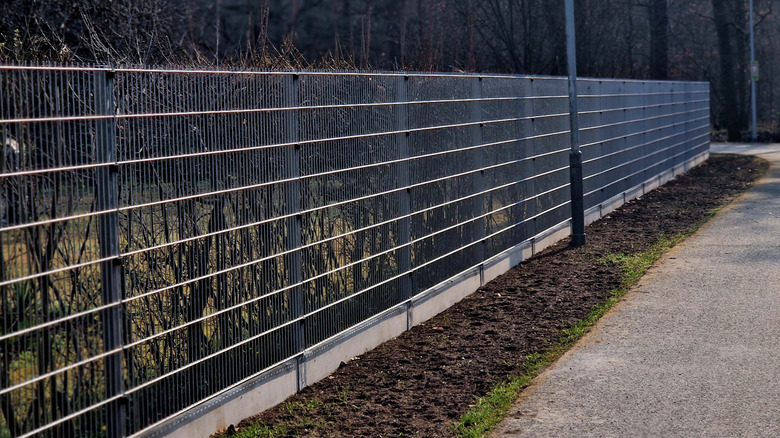The Best Method For Stretching Woven Wire Fence For Easy Installation
Woven wire (or any other wire mesh option) is a great way to keep pets and livestock in and unwanted critters out. It is one of several affordable fencing ideas to enclose your yard and is available in various heights to suit different needs. Wire can be stapled to wooden posts or fitted to metal posts using wire clips.
There are a number of mistakes everyone makes when installing a fence, but one that's often overlooked is stretching woven wire properly. If it's too loose, the fence will soon sag. If it's too tight, it puts a lot of pressure on the posts and could eventually pull them out of line. The wire could also break.
Tensioning single-strand wire is relatively straightforward, but any kind of mesh is a challenge. If you try pulling individual sections, they will bend out of shape, and you risk the whole fence distorting. Yet, trying to grab the full height in one go seems impossible. Fortunately, over on YouTube, Daniel, from Arms Family Homestead, has the answer to stretching woven wire fence for easy installation. All you need is one or two 1x4 boards, a few bolts, some chain, and a ratchet fence stretcher (also called a come along winch) to create a clamp that enables even pulling. Not only is it effective, but it's a surprisingly easy way of stretching woven wire fence for installation. In fact, it's so simple that one person can do it on their own.
Sometimes the old ways of stretching woven wire fence are the best
Farmers and homesteaders have been coming up with answers to common problems for generations, and YouTuber Daniel admits the method is actually his father's. What Daniel does is make a clamp by cutting an 8-foot board in half, drilling 3 holes, and fitting bolts through them. He then sandwiches the fence wire between the boards and tightens the bolts. Making a 5- or 6-foot version would just mean using two boards instead of one and maybe 4 holes for bolts instead of 3 for a strong grip. The fence wire is clamped with it lying on the ground, then stood upright. Chains for the ratchet are attached to the top and bottom of the boards to ensure an even pull, and pressure is applied a little at a time until the wire is tensioned correctly.
Daniel then shows how he uses pliers to tension the ends of the woven wire before tying it off. Bear in mind that Daniel is wearing strong work gloves throughout most of the process, and although it's a task that could be completed by one person, it's always safer to work with a buddy. There are some disadvantages to installing a chicken wire fence or others of a similar type, but if it's right for you, then using Daniel's method for stretching woven wire fence makes proper tensioning and installation easy.
